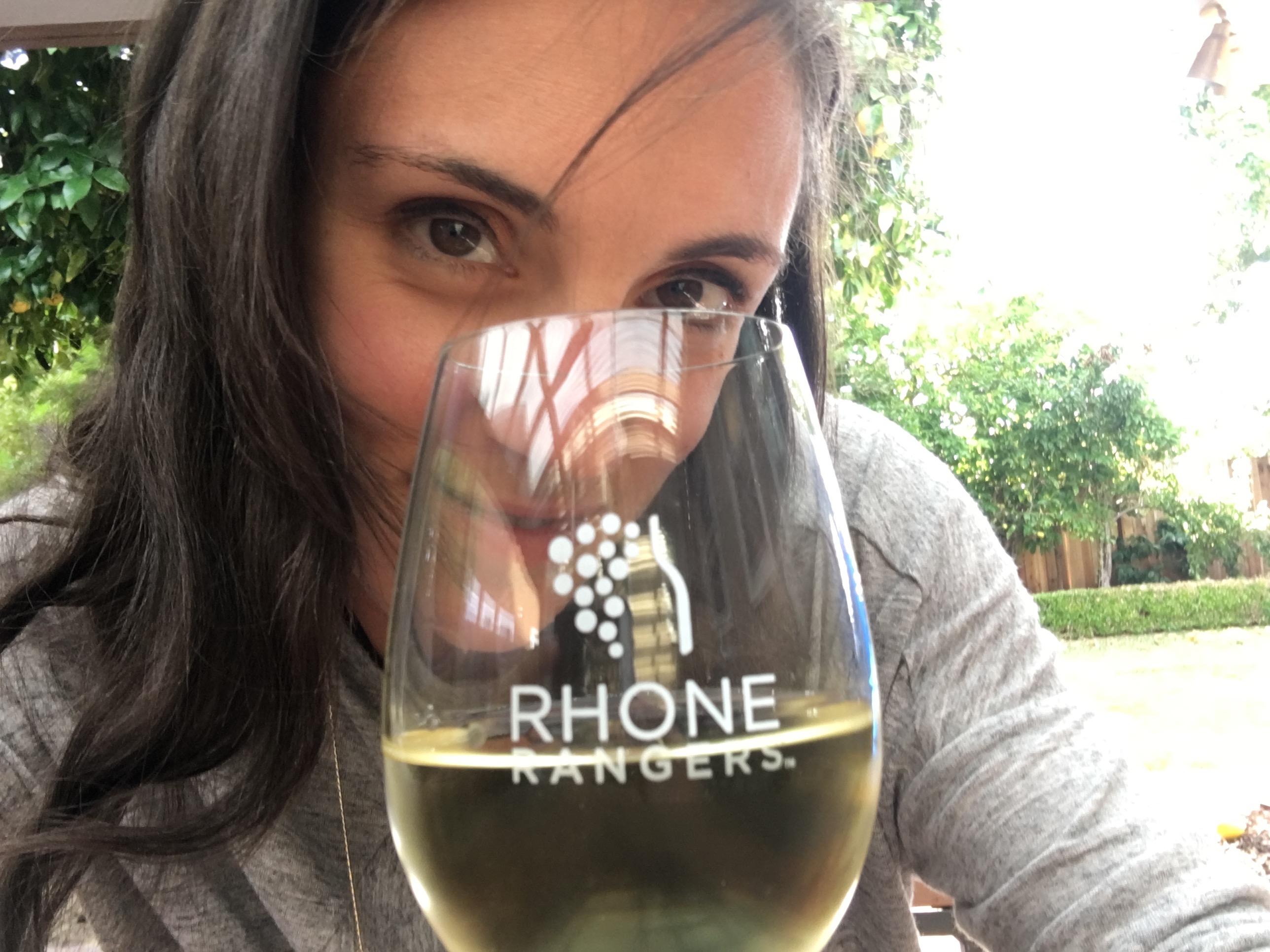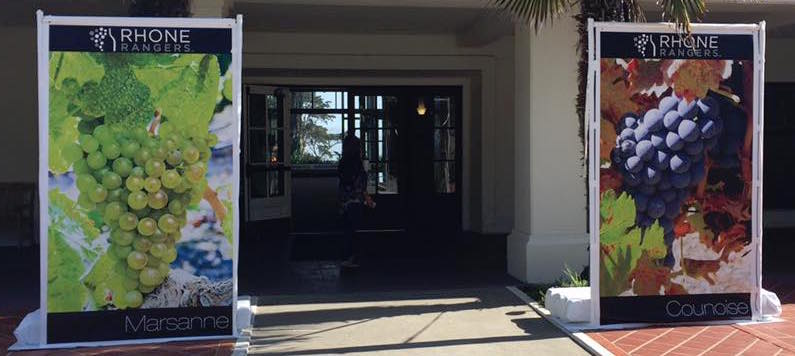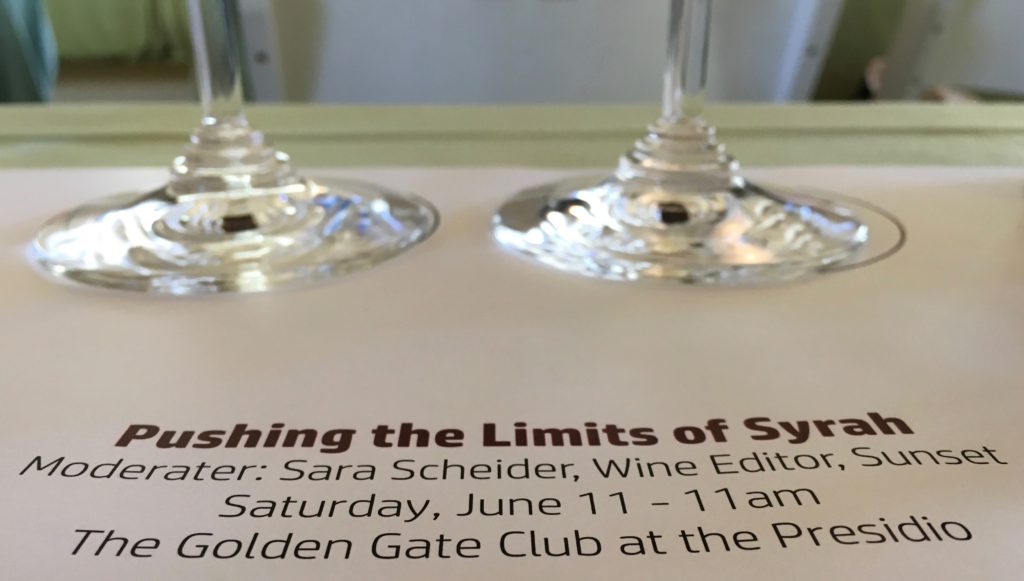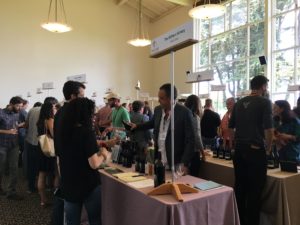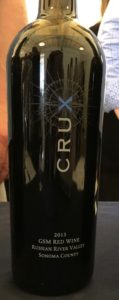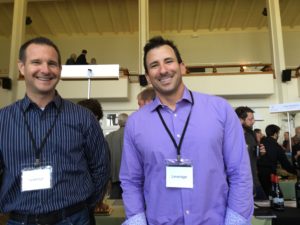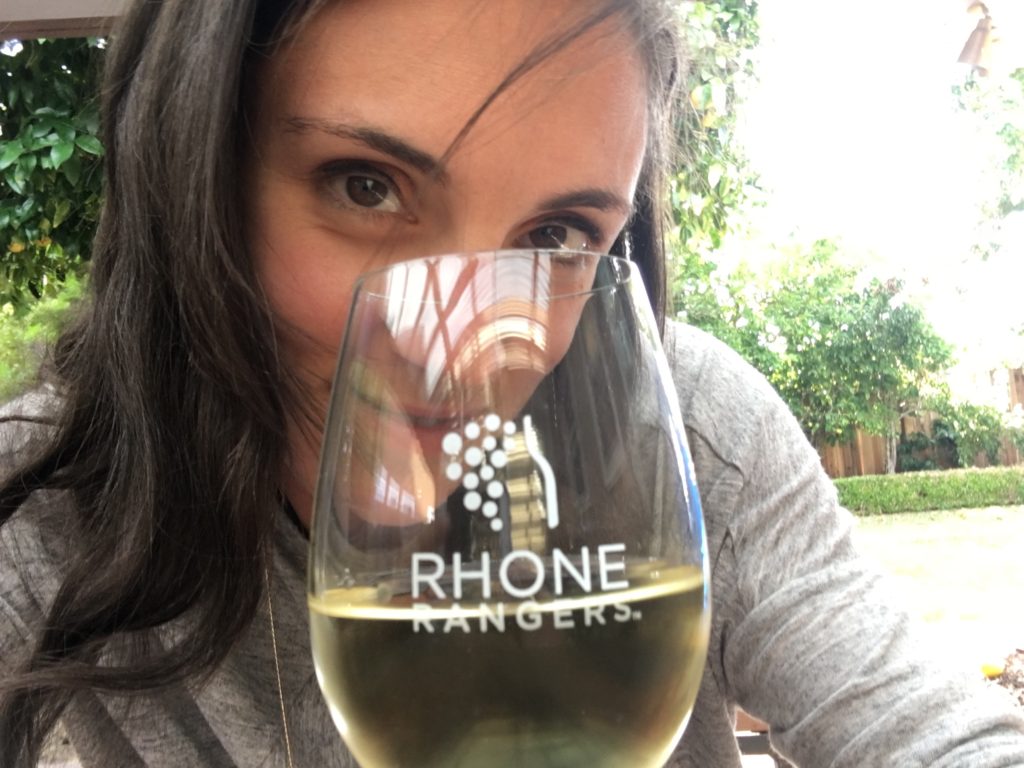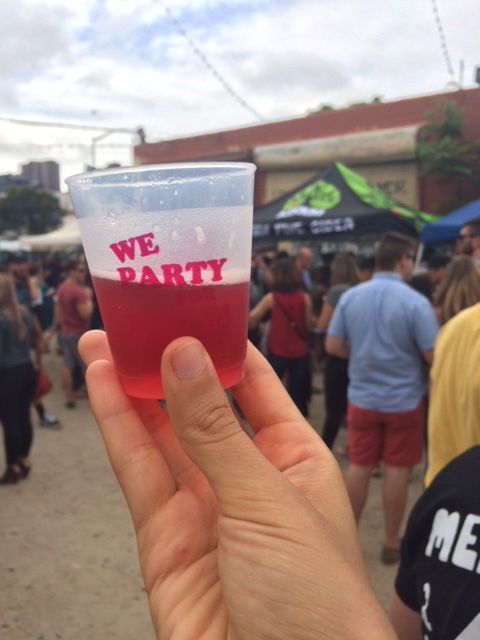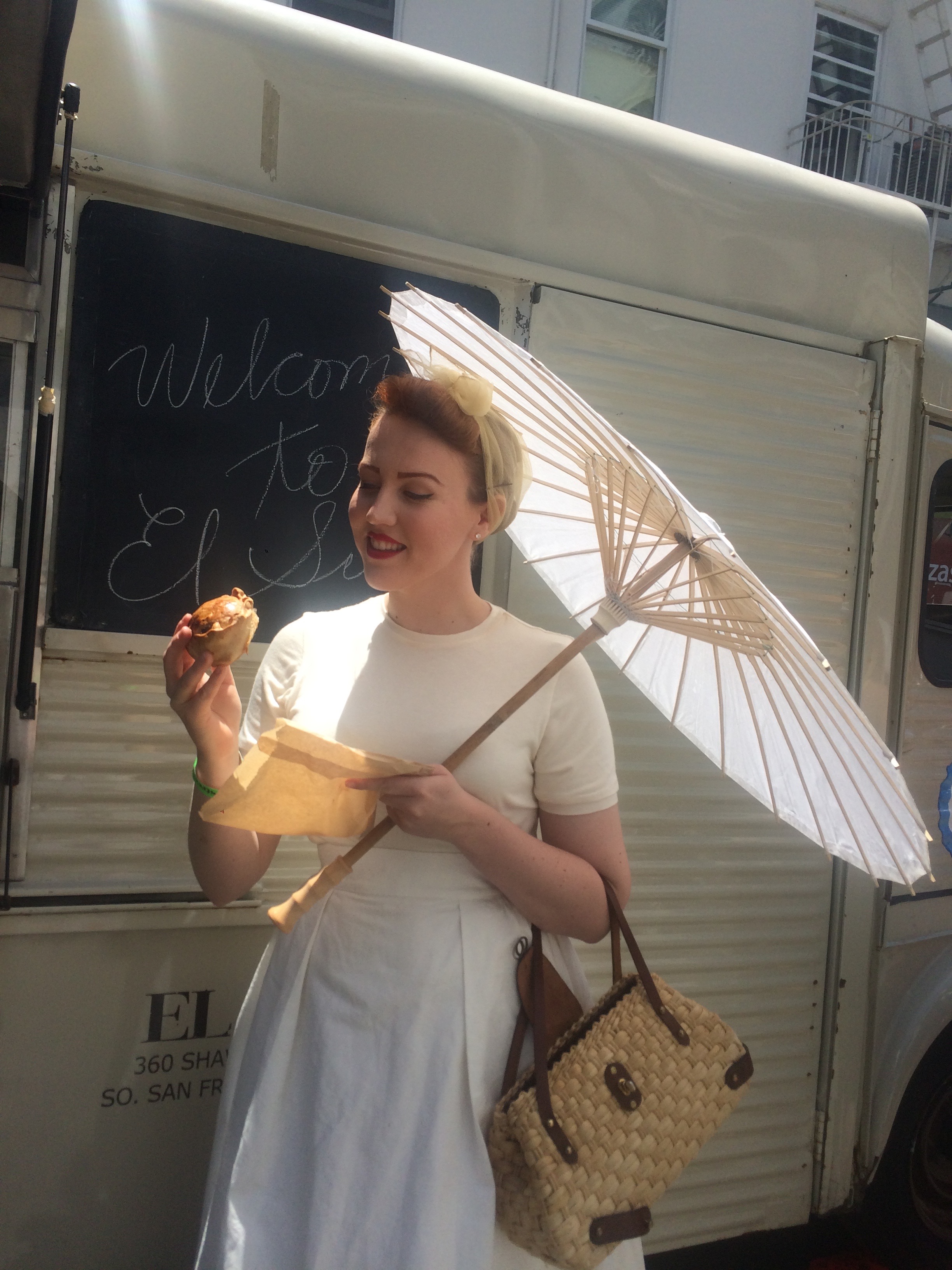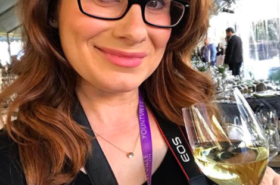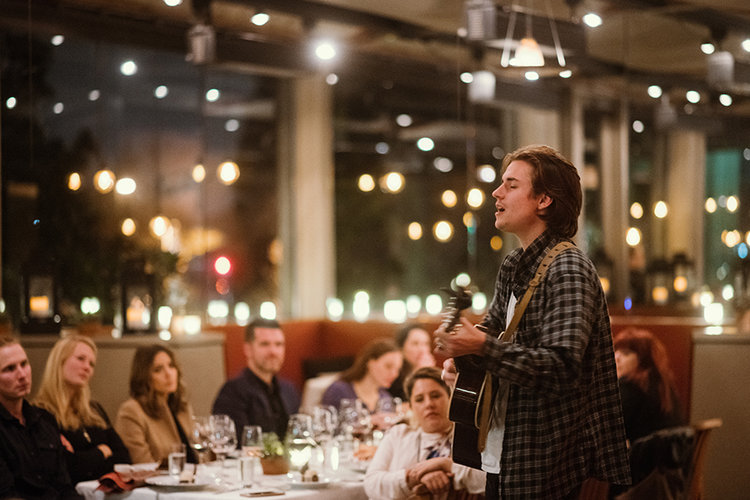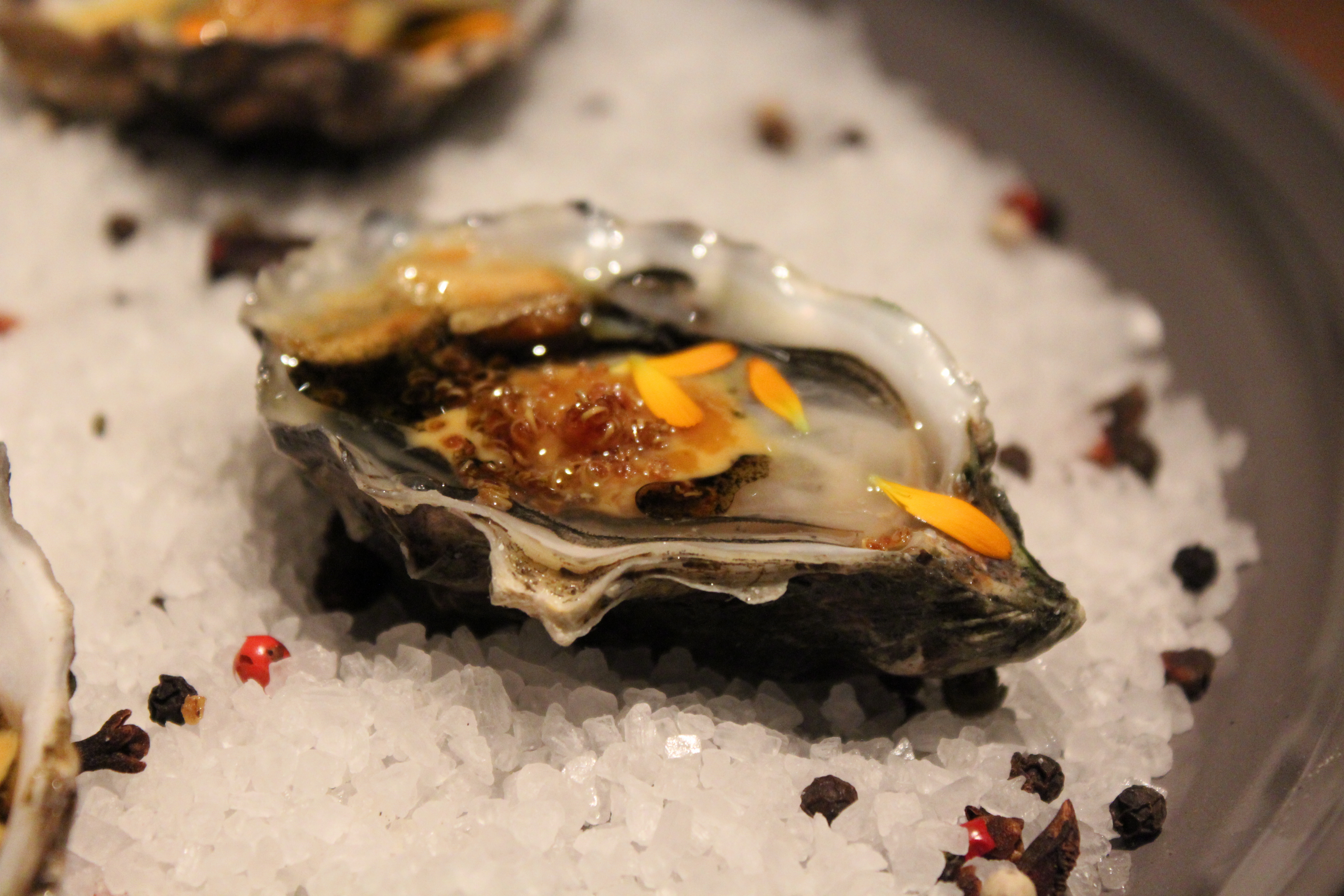Let’s talk about Rhones. There are over 20 varieties of grapes grown in France’s Rhone Valley. The most popular of which include Syrah, Mourvedre, Grenache, Grenache Blanc, Petite Sirah, Roussanne, and Viognier — all known for creating great wines on their own or as participants in blends, such as GSM (Grenache, Syrah, Mourvedre). But these grapes aren’t limited to their French heritage. In fact, almost every varietal found in the Rhone Valley can be found here in the States as well.
Rhone Rangers, a non-profit organization, is dedicated to promoting American Rhone-style wines, supporting the winemakers who choose to put a New World spin on Old World wine, and — of course — educating the public about the unique and versatile wines produced from all of this research and labor. During the 2016 Rhone Rangers Seminar and Grande Tasting in San Francisco, I had the privilege to learn directly from local, West Coast winemakers who work to move beyond common “Syrah-stereotypes.”
The day started with a seminar featuring 12 different winemakers who provided an in-depth look at their particular Syrahs. It’s amazing, tasting 12 different wines of the same varietal — you learn just how broad the Syrah spectrum really is. A few winemakers have partnered with established French wineries so as to implement Old World techniques into their grape-growing and winemaking, producing classical bold, dark, and oaky flavors. Others have adapted the Aussie take on Shiraz, resulting in a more fruit-forward and less tannin-heavy Syrah. And then there are those who simply work with the land they have, yielding grapes and wine that speak directly of American terrior.
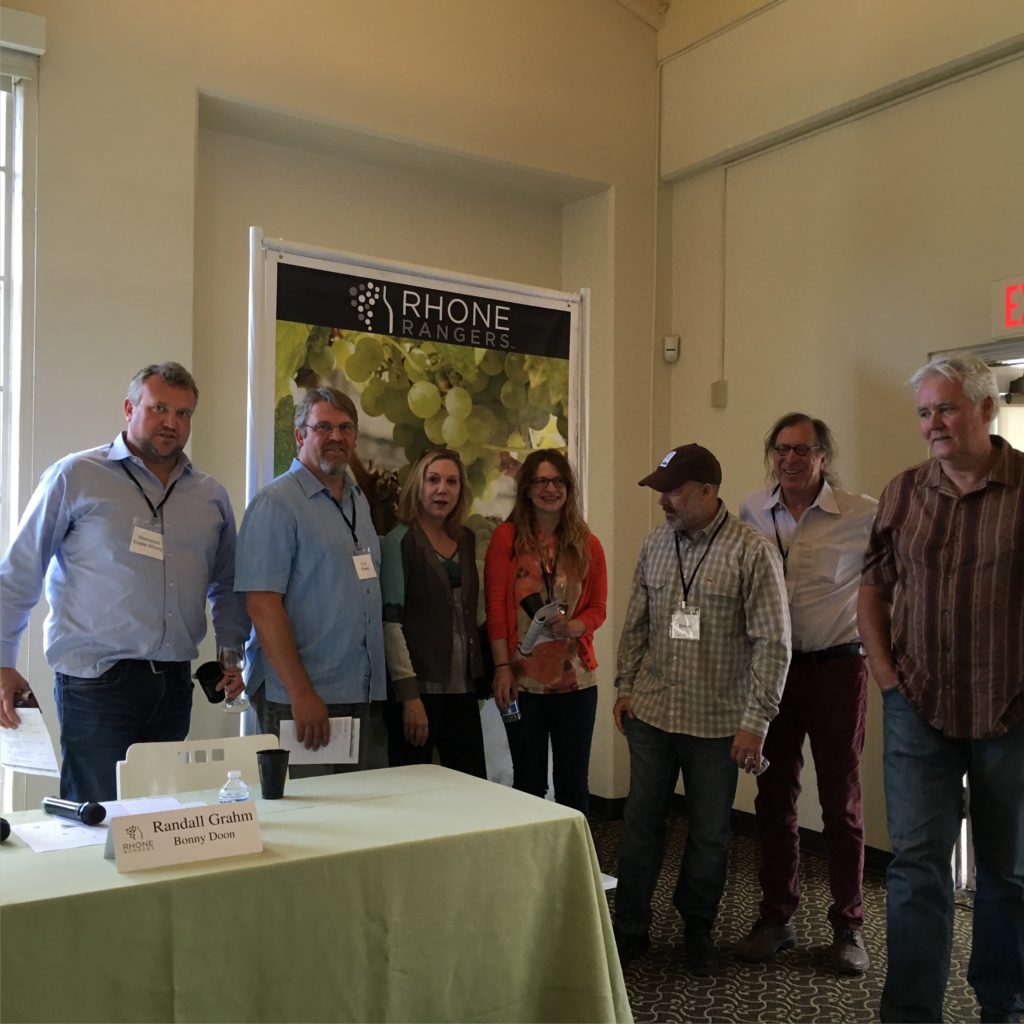
First Set of Presenters: Ben Cane ( Westwood) Steve Gower (Crux Winery), Sara Schneider (Moderator), K.D. Organ (Tenet Wines), Chris Pittennger (Skinner Vineyards), Randall Graham (Bonny Doon), Bill Easton (Terre Rouge)
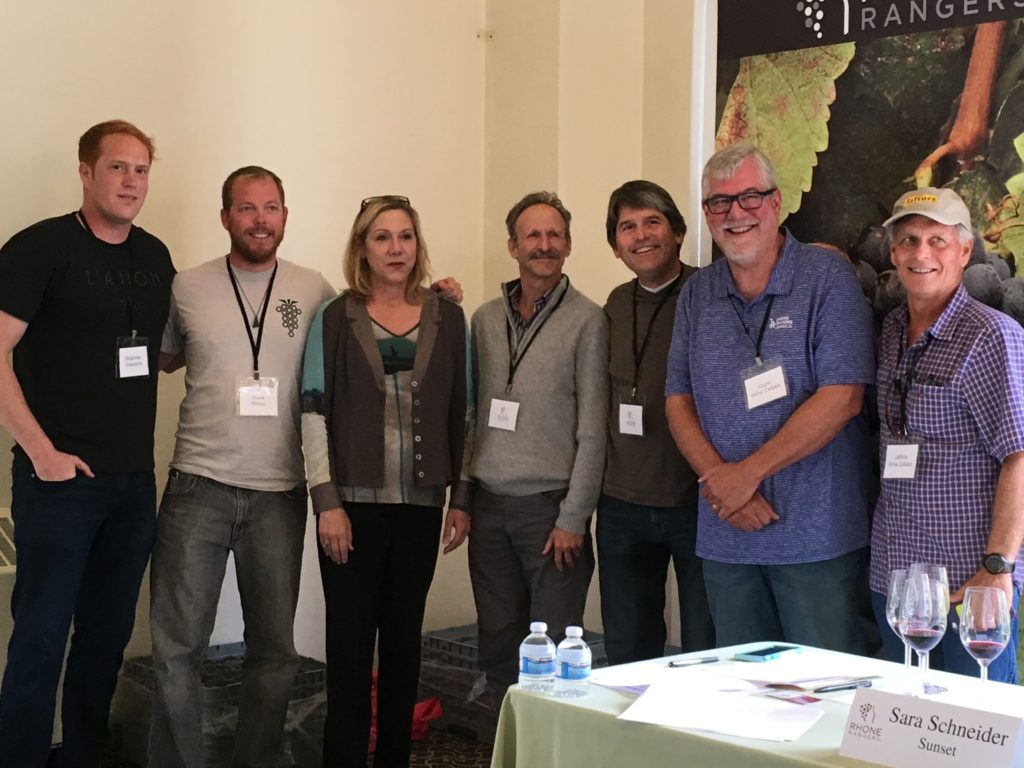
Second Set of Presenters: Peter Stoplman (Stolpman Vineyards), James Callahan (Rune Wines), Sara Schneider (Moderator), Christopher Whaley (Wrath Wines), Bob Lindquist (Qupe), Carl Bowker (Caliza), Craig Jaffurs (Jaffurs Wine Cellar)
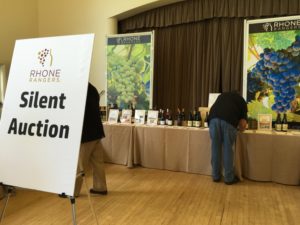
Silent Auction: No I didn’t win anything. But I’ll gladly accept free samples!
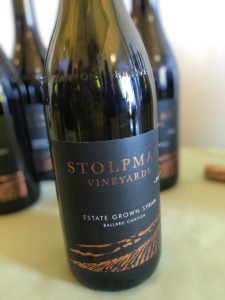 I’m going to start straight-away with my favorite Syrah for the day. Stolpman Vineyards is one of the wineries who pay homage to the Australian Shiraz. In fact, presenter Peter Stolman (Managing Partner of Stolpman Vineyards), studied winemaking in Australia for three years before taking over the family business from his father, Tom Stolpman. This family-owned and operated vineyard sits among Ballard Canyon in Santa Ynez Valley — an appellation strictly dedicated to Syrah. Because of the warm-weather climate, their dry-farming methods, and of course that Aussie influence, Stolpman produces a visually light, bright, jewel-red Syrah with a flavor to match. A perfume of violets, lilies, strawberries, red cherries, and — is that a hint of red apple? — all engulf the senses. With, comparatively, mild tannins the wine has a solid finish that lingers on the tongue — just enough to make you want one sip more.
I’m going to start straight-away with my favorite Syrah for the day. Stolpman Vineyards is one of the wineries who pay homage to the Australian Shiraz. In fact, presenter Peter Stolman (Managing Partner of Stolpman Vineyards), studied winemaking in Australia for three years before taking over the family business from his father, Tom Stolpman. This family-owned and operated vineyard sits among Ballard Canyon in Santa Ynez Valley — an appellation strictly dedicated to Syrah. Because of the warm-weather climate, their dry-farming methods, and of course that Aussie influence, Stolpman produces a visually light, bright, jewel-red Syrah with a flavor to match. A perfume of violets, lilies, strawberries, red cherries, and — is that a hint of red apple? — all engulf the senses. With, comparatively, mild tannins the wine has a solid finish that lingers on the tongue — just enough to make you want one sip more.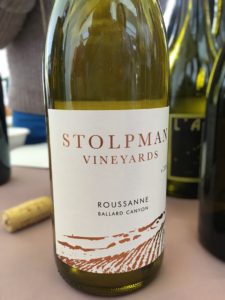
After tasting that, I had to see what else this Stolpmans had to offer. So, I stopped by their tasting table during the Grande Tasting where they had — to my enthusiastic surprise — a Roussanne. This is a rare treat for this California girl: I thought Roussanne’s were limited to French wineries. But, as Jessica Stolpman (Peter’s better half) explained, because of their unique location and farming methods, they’re able to yield grapes just as beautiful as any French vineyard. Agreed. Round mouthfeel, hints of stone fruits, and a long oaky, somewhat buttery finish. Stolpman also wins the award for most unique varietal of the day in my book.
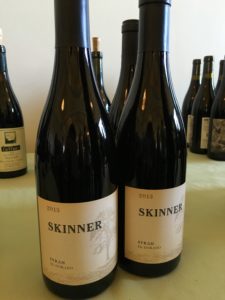 Here’s an interesting perspective: Skinner Vineyards’s Syrah is a bit of a blend (a la a French Rhone). They’re 2013 vintage contains 86% Syrah; 9% Viognier; and 5% Cuonise. Ok, so what does that do for the wine? While the Syrah brings notes of dark fruits, currants, and of course a healthy dose of tannins, the addition of the Viognier provides an almost cologne-like aroma (very woodsy and cedar-y, I’d say) that plays nicely in the background as you sip the wine. The Counoise, even with that small amount, provides a bit of freshness and acidity, balancing the overall flavor profile, calming the tannins, and creating a nice finish for the palate.
Here’s an interesting perspective: Skinner Vineyards’s Syrah is a bit of a blend (a la a French Rhone). They’re 2013 vintage contains 86% Syrah; 9% Viognier; and 5% Cuonise. Ok, so what does that do for the wine? While the Syrah brings notes of dark fruits, currants, and of course a healthy dose of tannins, the addition of the Viognier provides an almost cologne-like aroma (very woodsy and cedar-y, I’d say) that plays nicely in the background as you sip the wine. The Counoise, even with that small amount, provides a bit of freshness and acidity, balancing the overall flavor profile, calming the tannins, and creating a nice finish for the palate.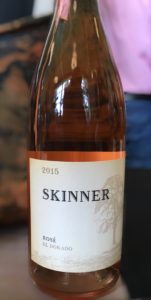
Curious about what innovative ideas they had regarding other varietals, I stopped by their tasting booth and just had to try, what they call, their “purposeful” rosé. Whereas most winemakers use (for lack of a better word) “leftovers” of other varietals to create a rosé, Skinner’s 40% Mourvedre, 35% Counoise, 25% Grenache grapes are all grown, picked, and pressed (with skins intact) for the sole purpose of creating this rosé. The result is a very light, bone-dry, salmon-pink wine that’s perfect for sipping on a warm day, versatile enough to pair with any cuisine. Skinner Vineyards has won my rosé of the day.
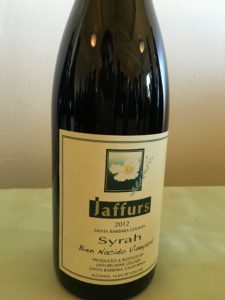 I’m looking at my tasting notes from the Jaffur’s Syrah and the first thing I wrote was “dark dark dark” and, after smelling the wine, “that dirt! gravel!” It truly is one of the darkest-hued wines I’ve ever seen. Even
I’m looking at my tasting notes from the Jaffur’s Syrah and the first thing I wrote was “dark dark dark” and, after smelling the wine, “that dirt! gravel!” It truly is one of the darkest-hued wines I’ve ever seen. Even 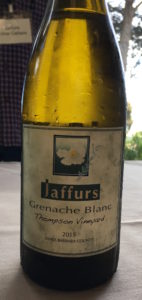 owner and winemaker Craig Jaffurs refers to this particular vintage as the “blackest wine.”
owner and winemaker Craig Jaffurs refers to this particular vintage as the “blackest wine.”
And it’s no wonder, the fruit was stemmed, not crushed (maintaining the natural wood of the grape clusters), and the full grapes were put through a 48-hour cold soak (preserving the full flavors of the grapes) before fermentation. The result: you experience the whole grape and where it’s grown with each sip. Despite all of that, there is an underlying acidity that brings a freshness to the drinking experience which means a) this wine is certainly enjoyable now and b) the wine has the potential to age, forming more complexity as
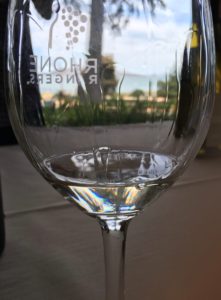 the years go on.
the years go on.
Here’s the funny thing. I stopped by Jaffur’s tasting table and received the exact opposite experience. Their 2015 Grenache Blanc is so clear in the glass, to look at it you’d think you were drinking water. This white varietal was fermented in 100% stainless steel, maintaining a bright acidity and minerality that just feels clean and pure on the palate. Subtle tropical notes, hints of melon — if their Syrah was the boldest wine of the day, then their Grenache Blanc was certainly the most mellow.
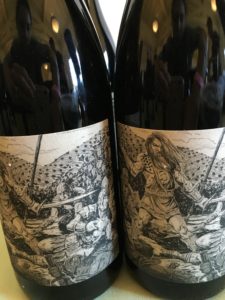
Victorious after a vicious battle, the warrior stands amongst the slain. He breathes in the deep, dark aroma of the blood of the fallen men. But just then a breeze wafts by bringing scents of orange blossoms and sweet, juicy fruits. His mind and body are now calm as he thinks of home and the lover he will soon return to.
Ok, I know, just like a book you’re not supposed to judge a wine by its…label…but I can’t help it. Rune has to win the award for best labels. As the winemaker says, “Wine is the most ancient and influential beverage ever known to mankind. Through its craft, a story of time and place is bottled and consumed. For this reason, every wine has a story…” That is something I honestly believe. Like many wine lovers, I’m sure, each time I drink a wine I ask, “What’s the story? What is this wine telling me?” And James Callahan goes out of his way to make sure that the art on his bottles visually depicts the story he believes his wine tells.
Lastly, I have to give credit to the winery that convinced me to complete a full flight at their tasting table. Steve Gower and Brian Callahan, owners and winemakers of Crux Winery, took me on a journey: from their super subtle rosé to their bright citrus-y Grenache Blanc, the warm oaky Grenache, and — of course — the earthy Syrah full of flavors of the whole vineyard. But the GSM blend was a journey all its own. Typically called “GSM” because of the percentages of the different grapes (high percentage of Grenache, followed by Syrah, and then Mourvedre), the 2013 GSM from Crux Winery will literally take you from G to S to M. Opening with those warm, oaky flavors of the Grenache, you’re immediately pulled in as with a good introduction; the complexity of the Syrah keeps you interested (“What are those flavors,” you’ll wonder as you let the wine sit on your tongue and your mind begins to wander); and then the final closure of the Mourvedre, with its rich tannins, brings the taste to a complete finish on the palate. Let’s go again…
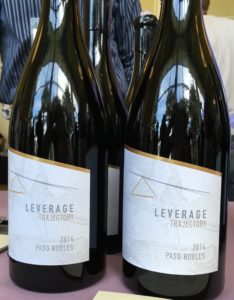
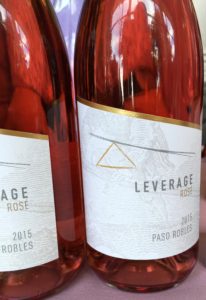 My honorable mention goes to Leverage, who, although did not present at the
My honorable mention goes to Leverage, who, although did not present at the
seminar, was one of the most engaging representatives at the Grande Tasting. Jason DiFrancesco, owner, and winemaker of Leverage reminded me of what I truly love about wine: sharing a drink, swapping stories, and making a personal connection with the people you’re with — whether meeting them for the first time at a wine tasting or sitting at home with family.
And their wines match that sentiment perfectly. Their rosé has a warm and friendly attitude with a surprising amount of depth for a pink-colored wine. Jason called it “a Big Boy rosé” and shared his secret ingredient (just a hint of Petite Syrah…shhhh…). So, sure, you could sip this in the garden underneath the summer sun, but you could also drink it with a steak from the Barbie. Keeping with that good attitude, the Grenache has, what I call, an “open mind.” You start with calm, somewhat watery fruits, which are then balanced with a distinct amount of oak for a round mouthfeel, and then you end with just enough tannins to give the wine (and your taste buds) a little extra oomph. And then you’re ready for your next sip. For Pinot lovers, if you’re looking for something Pinot-esque but with just a notch more intensity, this is the wine for you.
I wish I could have stayed longer, tasted more, and met more experts in the wine industry. My thirst for wine knowledge seems unquenchable. But I’m so happy to have had the opportunity to sit in on the seminar, engage with the winemakers I was able to meet, and pass along the lessons and love I received from this event. Cheers!


